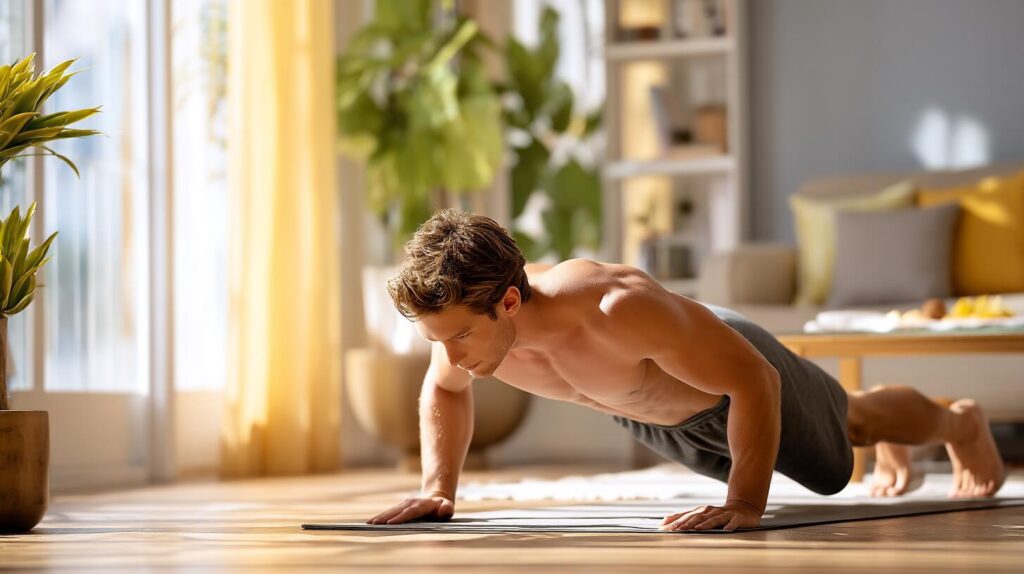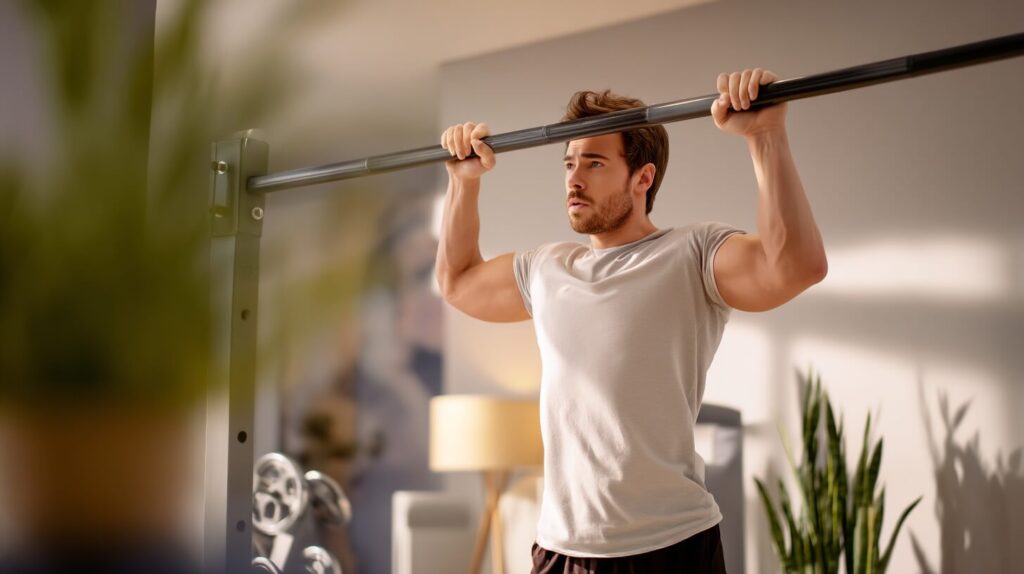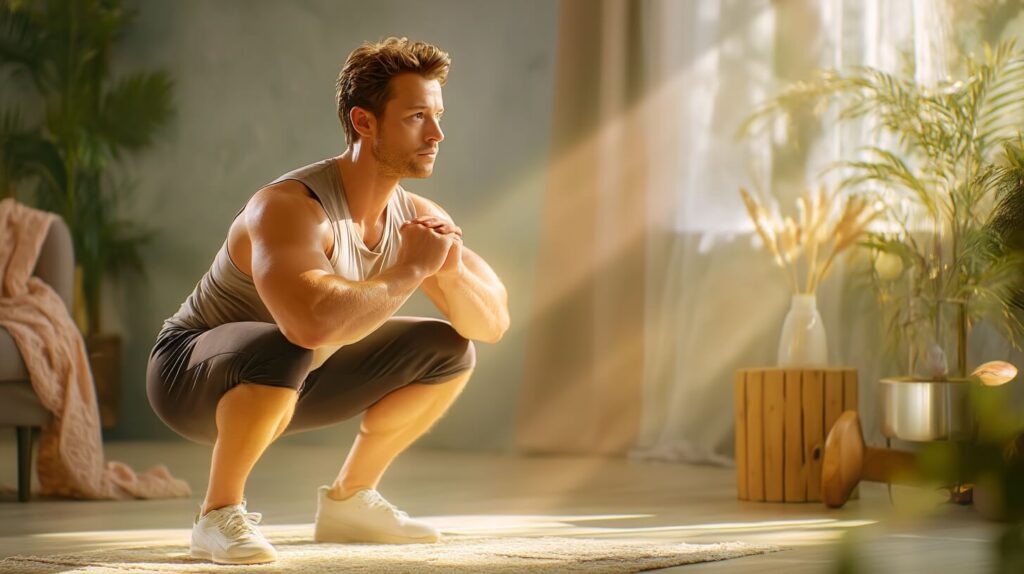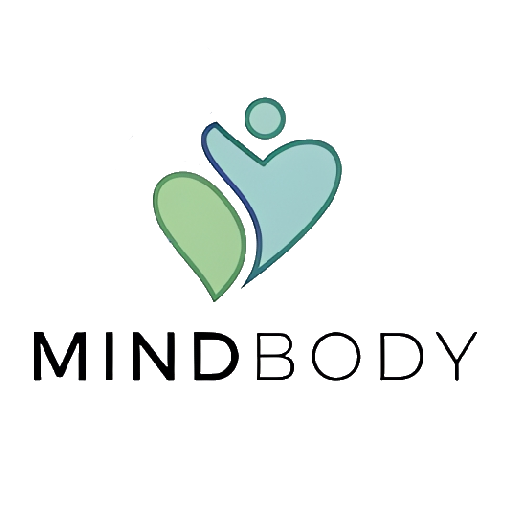Building strength doesn’t require expensive gym memberships, fancy equipment, or complicated machines. Your own body weight provides all the resistance you need to develop impressive muscle mass, functional strength, and athletic performance. For men looking to build a powerful physique or maintain fitness on a budget, bodyweight training offers a practical, effective, and accessible solution.
The beauty of equipment-free strength training lies in its versatility and convenience. Whether you’re traveling, working out at home, or simply prefer minimalist training approaches, these exercises can be performed anywhere, anytime. More importantly, bodyweight exercises develop functional strength that translates directly to real-world movements and athletic performance.
This comprehensive guide presents the top 10 most effective bodyweight exercises for men, along with proper form instructions, progression strategies, and programming recommendations to help you build maximum strength without touching a single piece of equipment.
Contents of the article:
Understanding Bodyweight Strength Training
The Top 10 Bodyweight Exercises for Male Strength
Creating Effective Training Programs
Understanding Bodyweight Strength Training
Before diving into specific exercises, it’s important to understand the principles that make bodyweight training effective and how to apply progressive overload without adding external weights.
The Science of Bodyweight Training
Bodyweight exercises are compound movements that engage multiple muscle groups simultaneously, creating functional strength patterns that improve everyday performance. Unlike isolation exercises on machines, bodyweight training requires balance, coordination, and core stability, developing athleticism alongside raw strength.
Research shows that bodyweight training can produce similar muscle growth and strength gains to traditional weightlifting when performed with adequate intensity and volume. The key lies in manipulating variables like exercise tempo, leverage, range of motion, and training volume to create sufficient challenge.
Progressive Overload Without Weights
Building strength requires progressive overload – gradually increasing the demands placed on your muscles. Without weights, you achieve this through several methods: increasing repetitions, slowing down movement tempo, decreasing rest periods, advancing to more challenging exercise variations, or increasing training volume and frequency.
Understanding these progression methods ensures continued strength gains even as you adapt to basic exercise variations. The exercises presented here include multiple progression levels to accommodate beginners through advanced athletes.
The Top 10 Bodyweight Exercises for Male Strength
These exercises represent the most effective movements for developing total-body strength, muscle mass, and functional fitness without equipment. Master these fundamentals before exploring more advanced variations.
1. Push-Ups: The Ultimate Upper Body Builder
Push-ups remain one of the most effective exercises for developing chest, shoulder, and triceps strength. This classic movement also engages the core and serratus anterior, making it a true total-body exercise.

Proper Form: Begin in a plank position with hands slightly wider than shoulder-width apart, body forming a straight line from head to heels. Lower your body until your chest nearly touches the ground, keeping elbows at roughly 45 degrees from your torso. Push back up to the starting position, maintaining rigid core engagement throughout.
Common Mistakes: Allowing hips to sag, flaring elbows too wide, incomplete range of motion, and losing core tension are frequent errors that reduce effectiveness and increase injury risk.
Progressions: Start with incline push-ups (hands elevated on a bench or wall) if standard push-ups are too challenging. Progress to decline push-ups (feet elevated), diamond push-ups (hands close together), archer push-ups (shifting weight side to side), or one-arm push-ups for advanced strength development.
2. Pull-Ups and Chin-Ups: Back and Biceps Power
While technically requiring a bar, pull-ups are so fundamentally important for upper body strength that they deserve inclusion. Most homes have a doorway pull-up bar option or nearby park with suitable equipment.

Proper Form: Hang from a bar with hands shoulder-width apart (pull-ups) or hands supinated and slightly narrower (chin-ups). Engage your shoulders by pulling them down and back, then pull yourself upward until your chin clears the bar. Lower with control to full arm extension.
Progressions: Begin with negative pull-ups (jumping to the top position and slowly lowering), assisted pull-ups using a resistance band, or inverted rows if pull-ups are too challenging. Progress to weighted pull-ups, one-arm assisted pull-ups, or muscle-ups for advanced strength.
Alternative: If no bar is available, use inverted rows under a sturdy table to develop similar pulling strength patterns.
3. Dips: Triceps and Chest Development
Dips powerfully target the triceps, chest, and anterior shoulders while requiring significant core stability. This exercise can be performed using parallel bars, sturdy chairs, or even a kitchen counter edge.
Proper Form: Support your body weight on parallel bars or two stable chairs with arms extended. Lower your body by bending elbows until shoulders descend below elbow level or until you feel a stretch in your chest and shoulders. Press back up to starting position.
Variations: Lean forward slightly to emphasize chest development, or keep your torso more upright to target triceps more intensely. Adjust your approach based on training goals.
Progressions: Start with bench dips (feet on ground, hands on bench behind you) before advancing to full dips. Progress to weighted dips, ring dips, or Korean dips for extraordinary strength development.
4. Squats: Lower Body Foundation
Bodyweight squats build leg strength, improve mobility, and develop the fundamental movement pattern required for virtually all lower body training. This exercise targets quadriceps, glutes, hamstrings, and core musculature.

Proper Form: Stand with feet shoulder-width apart, toes pointed slightly outward. Descend by pushing hips back and bending knees, keeping chest up and weight distributed through entire foot. Lower until thighs are at least parallel to the ground, then drive through heels to return to standing.
Key Points: Knees should track over toes without excessive inward collapse, torso remains relatively upright, and full depth is achieved while maintaining neutral spine alignment.
Progressions: Begin with box squats (sitting back to a box or bench) to develop proper mechanics. Progress to pause squats, tempo squats (slow descent), jump squats for power, pistol squats (single-leg), or shrimp squats for advanced leg development.
5. Lunges: Unilateral Leg Strength
Lunges develop leg strength while addressing muscle imbalances and improving balance and coordination. This unilateral exercise builds functional strength for sports and daily activities.

Proper Form: From standing, step forward with one leg and lower your body until both knees form approximately 90-degree angles. Front knee should remain behind toes, and back knee hovers just above the ground. Push through the front heel to return to starting position.
Variations: Walking lunges, reverse lunges (stepping backward), lateral lunges (stepping to the side), and jumping lunges each offer unique benefits and training stimuli.
Progressions: Start with static split squats (maintaining lunge position and only moving up and down). Progress to Bulgarian split squats (rear foot elevated), pistol squats, or jumping switch lunges for explosive power.
6. Planks: Core Stability Foundation
Planks develop isometric core strength essential for all other exercises and functional movement. This fundamental exercise strengthens the entire anterior core chain including rectus abdominis, transverse abdominis, and obliques.

Proper Form: Support your body weight on forearms and toes, maintaining a straight line from head to heels. Engage your core by pulling your navel toward spine, squeeze glutes, and avoid letting hips sag or pike upward. Breathe steadily while holding position.
Duration: Quality matters more than duration. Maintain perfect form for 30-60 seconds rather than holding poor positions for longer periods.
Progressions: Begin with knee planks or incline planks. Progress to side planks, plank variations with arm or leg lifts, plank walks, or extended arm planks (RKC plank) for intense core challenge.
7. Mountain Climbers: Dynamic Core and Cardio
Mountain climbers combine core strengthening with cardiovascular conditioning, making them excellent for developing work capacity and athletic endurance alongside strength.
Proper Form: Begin in push-up position with body forming a straight line. Drive one knee toward chest, then quickly switch legs in a running motion while maintaining plank position. Keep hips level and core engaged throughout the movement.
Tempo Options: Perform slowly and controlled for strength emphasis, or rapidly for metabolic conditioning and power development.
Progressions: Start with slow, alternating mountain climbers. Progress to cross-body mountain climbers (knee to opposite elbow), spider mountain climbers (knee to outside of elbow), or explosive mountain climber variations.
8. Burpees: Total Body Conditioning
Burpees develop full-body strength, power, and cardiovascular endurance simultaneously. While demanding, they provide extraordinary conditioning benefits and functional fitness development.
Proper Form: From standing, drop into a squat position with hands on the ground. Kick feet back into push-up position, perform a push-up, jump feet back to squat position, then explosively jump upward with arms overhead. Land softly and immediately begin the next repetition.
Modifications: Eliminate the push-up or jump components if needed initially. Step back into plank position rather than jumping if necessary for proper form maintenance.
Progressions: Standard burpees, burpee broad jumps, burpee pull-ups (if bar available), or one-legged burpees represent increasing difficulty levels.
9. Glute Bridges: Posterior Chain Development
Glute bridges strengthen the often-neglected posterior chain including glutes, hamstrings, and lower back. This exercise improves hip extension strength critical for athletic performance and injury prevention.
Proper Form: Lie on your back with knees bent and feet flat on ground hip-width apart. Drive through heels to lift hips upward until body forms a straight line from shoulders to knees. Squeeze glutes at the top, hold briefly, then lower with control.
Key Points: Avoid overextending the lower back at the top position. The movement should come from hip extension, not spinal hyperextension.
Progressions: Begin with basic glute bridges. Progress to single-leg glute bridges, elevated glute bridges (shoulders on bench), marching glute bridges, or hip thrusts for maximum glute development.
10. Handstand Push-Ups: Ultimate Shoulder Developer
Handstand push-ups represent one of the most challenging bodyweight exercises, developing extraordinary shoulder, triceps, and upper chest strength while requiring significant balance and body awareness.
Proper Form: Kick up into a handstand position against a wall for support. Lower your body by bending elbows until head touches or nearly touches the ground, then press back to full arm extension. Maintain core tension and controlled movement throughout.
Safety: This advanced exercise requires significant prerequisite strength and body awareness. Always use wall support initially and ensure adequate clearance below.
Progressions: Build toward handstand push-ups through pike push-ups (hips elevated in an inverted V position), wall-assisted handstand holds, negative handstand push-ups, and partial range handstand push-ups before attempting full range movement. Progress to freestanding handstand push-ups for elite-level strength.
Creating Effective Training Programs
Understanding how to combine these exercises into coherent training programs maximizes results and prevents plateaus.
Sample Full-Body Routine
For beginners and intermediate athletes, a full-body routine performed 3 times weekly provides excellent results:
Workout:
- Push-ups: 3-4 sets of 8-15 reps
- Inverted rows or pull-ups: 3-4 sets of 5-12 reps
- Squats: 3-4 sets of 12-20 reps
- Lunges: 3 sets of 10 reps per leg
- Dips: 3 sets of 6-12 reps
- Planks: 3 sets of 30-60 seconds
Rest 60-90 seconds between sets. Focus on progressive overload by adding repetitions, advancing exercise variations, or decreasing rest periods.
Upper/Lower Split
More advanced athletes may benefit from an upper/lower split performed 4 times weekly:
Upper Body (2x weekly):
- Pull-ups: 4 sets of max reps
- Push-ups: 4 sets of 15-25 reps
- Dips: 3 sets of 8-15 reps
- Pike push-ups: 3 sets of 10-15 reps
- Mountain climbers: 3 sets of 30 seconds
Lower Body (2x weekly):
- Squats: 4 sets of 20-30 reps
- Bulgarian split squats: 3 sets of 12 reps per leg
- Single-leg glute bridges: 3 sets of 15 reps per leg
- Jump squats: 3 sets of 10 reps
- Burpees: 3 sets of 10 reps
Progressive Overload Strategies
Continue making progress by systematically increasing training difficulty:
- Volume progression: Add sets or repetitions gradually
- Intensity progression: Advance to more challenging exercise variations
- Tempo manipulation: Slow down eccentric (lowering) phase to 3-5 seconds
- Density training: Complete same work in less time by reducing rest periods
- Frequency increase: Add training sessions as recovery capacity improves
Maximizing Results
Several additional factors influence the effectiveness of your bodyweight training program.
Nutrition for Muscle Growth
Building muscle requires adequate protein intake (approximately 1.6-2.2 grams per kilogram of body weight daily) combined with a slight caloric surplus. Whole foods, adequate hydration, and nutrient timing around workouts support recovery and growth.
Recovery and Rest
Muscles grow during recovery periods, not during training. Ensure adequate sleep (7-9 hours nightly), proper nutrition, and strategic rest days between intense training sessions. Listen to your body and adjust training volume if experiencing persistent fatigue or declining performance.
Consistency Over Perfection
Long-term consistency produces better results than sporadic intense training. Establish realistic schedules you can maintain indefinitely rather than unsustainable crash programs. Even abbreviated workouts maintain progress when life gets busy.
Conclusion
Building impressive strength without equipment is not only possible but offers unique advantages including functional strength development, improved body awareness, and unmatched convenience. These ten exercises provide everything needed to develop a powerful, athletic physique without spending money on gym memberships or equipment.
Master the fundamental movement patterns, apply progressive overload consistently, and maintain proper nutrition and recovery practices. With dedication and intelligent programming, bodyweight training can produce extraordinary strength gains and physique development.
Start with variations appropriate to your current fitness level, focus on perfect form, and gradually progress to more challenging variations. Your body provides all the resistance needed – the only requirements are consistency, effort, and commitment to the process. Whether you’re a complete beginner or experienced athlete, these exercises offer endless progression possibilities. Begin today, stay consistent, and discover the remarkable strength you can build using nothing but your own body weight.

